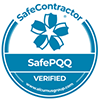How to Choose the Right Roll Cage for Your Business
When it comes to streamlining operations and ensuring efficient load movement, choosing the right roll cage for your business is paramount. The selection process involves careful consideration of various factors to ensure a seamless and safe experience. This comprehensive guide will delve into each crucial aspect, helping you make an informed decision that aligns perfectly with your business needs.
Understanding Your Business Needs
Before embarking on your roll cage selection journey, take a step back and assess your business requirements. Understanding the types of loads you’ll be transporting, their weights, and the frequency of use is essential. A business dealing with large, heavy items frequently will have different needs than one that occasionally moves smaller loads. Additionally, consider the operational environment – indoor or outdoor, smooth surfaces or rough terrain – as these factors will shape your roll cage requirements.
Weight Capacity: Going Beyond the Numbers
While weight capacity is a primary consideration, it’s vital to go beyond the numbers. Calculating the maximum load your roll cage can handle is crucial, but always leave room for a safety margin. Opting for a roll cage with a slightly higher weight capacity than your typical load prevents overloading and extends the roll cage’s lifespan. Moreover, think about potential business growth; choosing a roll cage that can accommodate future load increases will save you from having to invest in a new one prematurely.
Load Platform Size: Space Matters
The size of the load platform plays a significant role in your roll cage’s usability. Balance the need for a larger platform to accommodate various load shapes with the necessity for manoeuvrability in tight spaces. While a wider platform might allow for more items to be transported at once, it could hinder navigation in constrained areas. Consider the types of loads you’ll typically handle and strike a balance between platform size and manoeuvrability.
Terrain Considerations: Where Will You Roll?
The type of terrain your roll cage will traverse is a crucial factor. Indoor and outdoor environments present different challenges. For smooth surfaces like warehouses, retail spaces, or offices, a roll cage with standard wheels might suffice. However, if you’ll be navigating rough terrain or tackling stairs or inclines, opt for a roll cage designed for outdoor or heavy-duty use. Pneumatic wheels provide better shock absorption on uneven surfaces, enhancing stability and reducing potential damage to both the load and the roll cage.
Wheel Type: Choosing the Right Wheels
Wheels are the foundation of your roll cage’s mobility. Swivel wheels allow for greater manoeuvrability, making tight turns and navigating narrow spaces easier. Fixed wheels, on the other hand, provide stability and are suitable for straightforward linear movement. Pneumatic wheels, with their air-filled design, excel on uneven terrain, absorbing shocks and vibrations. Solid wheels, while maintenance-free, are better suited for indoor use. The material and diameter of the wheels also impact their performance, with rubber and polyurethane being common materials known for durability and load-bearing capabilities.
Handle Design: Comfort and Control
Ergonomics matter when it comes to handling design. An ergonomic handle with a comfortable grip reduces strain on the user, promoting better control and preventing injuries. Adjustable handles allow for customisation based on the user’s height, optimising comfort during operation. Foldable handles are convenient for storage, especially in space-constrained areas. Fixed handles offer simplicity and stability, but may limit storage options.
Braking Mechanism: Stopping Safely
Safety should always be a priority, and the braking mechanism plays a crucial role in this aspect. Foot brakes provide quick and easy stopping, while hand brakes offer more control, especially when navigating inclines. Look for locking mechanisms that keep the roll cage in place during loading and unloading. Consider the terrain you’ll encounter – inclines, slopes, or ramps – and choose a braking system that ensures safety under all conditions.
Durability and Maintenance: Longevity Matters
Investing in a roll cage that’s built to last pays off in the long run. Choose a roll cage made from high-quality materials that can withstand the demands of your business environment. Corrosion resistance is crucial, especially for outdoor use or environments with moisture. Additionally, consider ease of cleaning and maintenance; a roll cage that’s easy to clean and requires minimal upkeep will save you time and effort in the long term.
Manoeuvrability: Navigating Tight Spaces
In cramped spaces, manoeuvrability is key. A roll cage with a smaller turning radius allows for easy navigation around obstacles and in tight corners. Consider the design of the wheels – a four-wheel cage design offers stability, while a three-wheel design enhances manoeuvrability. The steering mechanism also influences how smoothly the roll cage can be guided, ensuring that you can navigate your workspace effortlessly.
Storage and Portability: When It’s Not in Use
Even when not in use, your roll cage should be easy to manage. Foldable designs save space during storage and are ideal for businesses with limited storage areas. Stackable options are convenient if you require multiple roll cages but have limited space. Some roll cages come with hanging or wall-mounted storage solutions, keeping them off the floor and organised.
Budget Considerations: Finding the Right Balance
While it’s tempting to go for the most advanced roll cage on the market, consider your budget. Striking the right balance between features and cost is crucial. Avoid overcommitting to features you won’t use or investing in excessive capacity. Focus on value for money and choose a roll cage that meets your immediate needs while allowing for potential growth.
Conclusion
Selecting the right roll cage for your business involves a comprehensive evaluation of various factors. By understanding your business needs, and carefully considering weight capacity, load platform size, terrain compatibility, wheel type, handle design, braking mechanism, durability, manoeuvrability, storage options, and budget constraints, you can make an informed decision. The right roll cage enhances operational efficiency, reduces the risk of injuries, and contributes to a more streamlined workflow, ultimately driving the success of your business. Remember, investing time and effort in choosing the perfect roll cage is an investment in your business’s future.









